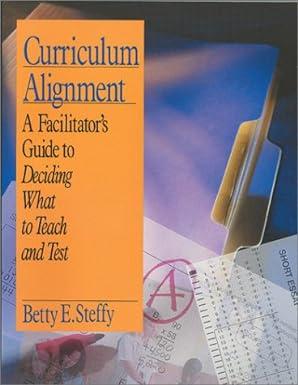Answered step by step
Verified Expert Solution
Question
1 Approved Answer
Please Please check my answers and if i am wrong correct me: 5: 6: 7: 8: 12: 13: 14: 15: 19: 20: 21: Which of
Please Please check my answers and if i am wrong correct me:
5:

6:

7:

8:

12:

13:

14:

15:

19:

20:

21:
 Which of the following is an example of a cost that varies in total as the number of units produced changes? a. direct materials cost b. salary of a production supervisor c. straight-line depreciation on factory equipment d. property taxes on factory buildings a. Finished Goods and Cost of Goods Sold b. Work in Process and Finished Goods c. Work in Process and Factory Overhead d. Work in Process and Cost of Goods Sold All of the following are characteristics of a process cost system except a. the system accumulates costs per job b. the cost flows are similar to the physical flow of materials through the production departments c. the system may use several work in process inventory accounts d. manufacturing costs are grouped by department rather than by job The details concerning the costs incurred on each job order are accumulated in a work in process account and supported by a a. stock ledger b. creditors ledger c. cost ledger d. materials ledger Costs that remain constant in total dollar amount as the level of activity changes are called a. product costs b. fixed costs c. mixed costs d. variable costs The three categories of manufacturing costs comprising the total cost of work in process are direct labor, direct materials, and a. accounting salaries expense b. selling expenses c. factory overhead d. direct expenses For which of the following businesses would the job order cost system be appropriate? a. lumber mill b. oil refinery c. hospital d. canned soup processor Which of the following systems provides for a separate record of the cost of each particular quantity of product that passes through the factory? a. general cost system b. job order cost system c. process cost system d. replacement cost system In process cost accounting, the costs of direct materials and direct labor are charged directly to a. service departments b. customer accounts receivable c. job orders d. processing departments In a process cost system, the amount of work in process inventory is valued by a. finding the sum of all completed jobs b. allocating departmental costs between completed and partially completed units c. finding the sum of all open job costs d. multiplying units in ending inventory by the direct materials cost per unit Which of the following costs is an example of a cost that remains the same in total as the number of units produced changes? a. direct materials b. direct labor c. units-of-production depreciation on factory equipment d. salary of a factory supervisor
Which of the following is an example of a cost that varies in total as the number of units produced changes? a. direct materials cost b. salary of a production supervisor c. straight-line depreciation on factory equipment d. property taxes on factory buildings a. Finished Goods and Cost of Goods Sold b. Work in Process and Finished Goods c. Work in Process and Factory Overhead d. Work in Process and Cost of Goods Sold All of the following are characteristics of a process cost system except a. the system accumulates costs per job b. the cost flows are similar to the physical flow of materials through the production departments c. the system may use several work in process inventory accounts d. manufacturing costs are grouped by department rather than by job The details concerning the costs incurred on each job order are accumulated in a work in process account and supported by a a. stock ledger b. creditors ledger c. cost ledger d. materials ledger Costs that remain constant in total dollar amount as the level of activity changes are called a. product costs b. fixed costs c. mixed costs d. variable costs The three categories of manufacturing costs comprising the total cost of work in process are direct labor, direct materials, and a. accounting salaries expense b. selling expenses c. factory overhead d. direct expenses For which of the following businesses would the job order cost system be appropriate? a. lumber mill b. oil refinery c. hospital d. canned soup processor Which of the following systems provides for a separate record of the cost of each particular quantity of product that passes through the factory? a. general cost system b. job order cost system c. process cost system d. replacement cost system In process cost accounting, the costs of direct materials and direct labor are charged directly to a. service departments b. customer accounts receivable c. job orders d. processing departments In a process cost system, the amount of work in process inventory is valued by a. finding the sum of all completed jobs b. allocating departmental costs between completed and partially completed units c. finding the sum of all open job costs d. multiplying units in ending inventory by the direct materials cost per unit Which of the following costs is an example of a cost that remains the same in total as the number of units produced changes? a. direct materials b. direct labor c. units-of-production depreciation on factory equipment d. salary of a factory supervisor Step by Step Solution
There are 3 Steps involved in it
Step: 1

Get Instant Access to Expert-Tailored Solutions
See step-by-step solutions with expert insights and AI powered tools for academic success
Step: 2

Step: 3

Ace Your Homework with AI
Get the answers you need in no time with our AI-driven, step-by-step assistance
Get Started


